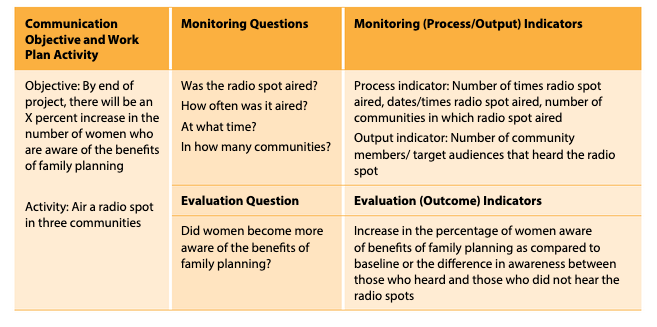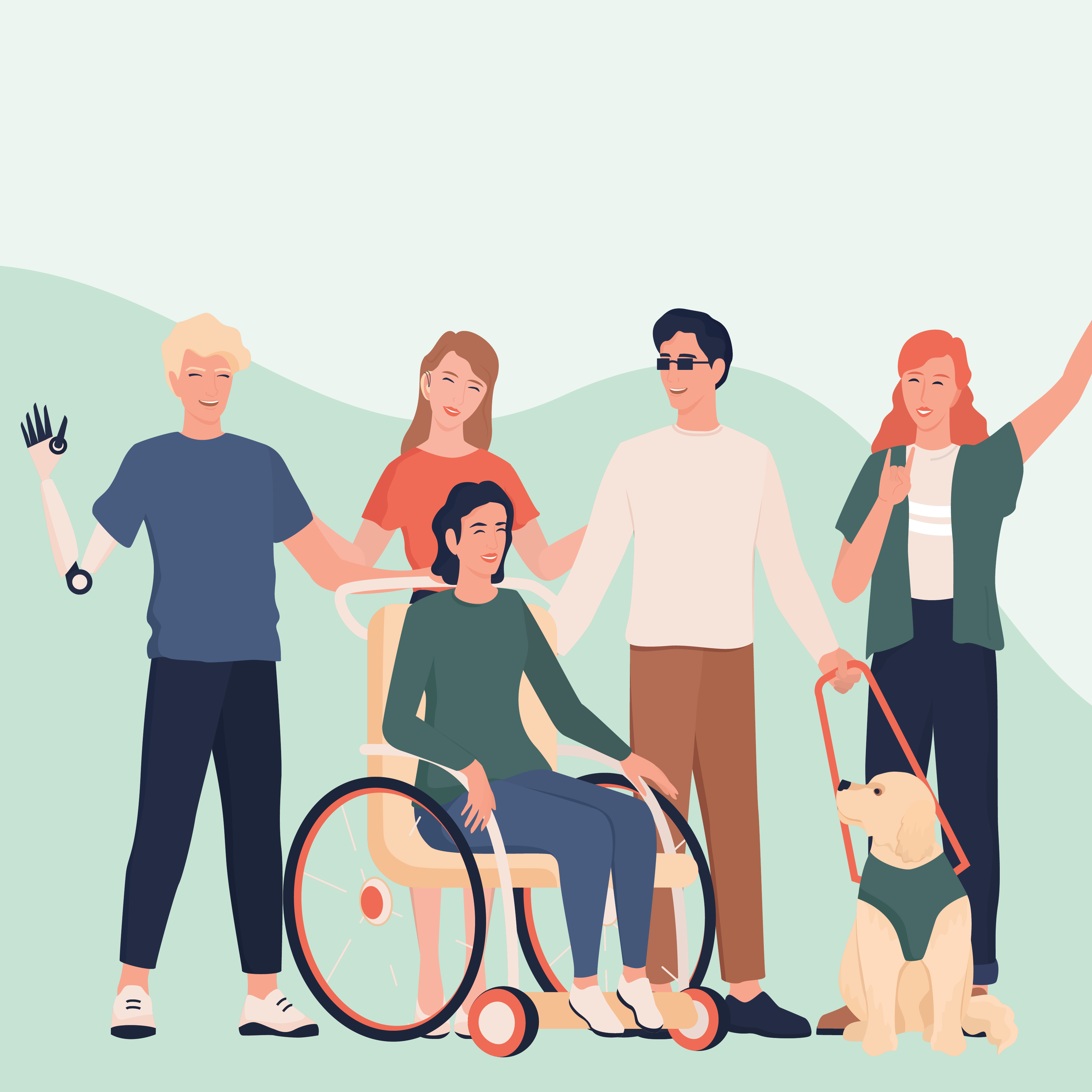
Campaigning
Designing impactful multi-channel communication plans
Introduction
Whether you aim to inspire broader social change or individual behaviour change, communication approaches can help promote changes in knowledge, attitudes, norms, beliefs and behaviours. Such approaches are known as communication campaigns. Successful campaigns reach a spectrum of individuals and groups in a society, through a variety of channels.
A multi-channel communication campaign does not simply communicate one-way messages through a mix of channels and activities. It is a coordinated effort to encourage participation and engagement. It seeks to support and persuade the priority group to adopt, maintain, modify, abandon or accept attitudes, perceptions or behaviours that are beneficial to the individual or a larger social group.
UNICEF has a long history of successful campaigning. Recent global examples include advocating for vaccines for all, fighting against cyberbullying and promoting the reopening of schools during the Covid-19 pandemic. Campaigns like these help raise awareness about issues, lobby decision-makers for change, encourage public activism and promote positive change.
Not all communications efforts are campaigns. There will also be times when strategic communication will be a necessary part of your broader Social and Behaviour Change strategy. Raising awareness, encouraging an enabling policy environment and using multiple mass media channels to promote or reinforce large-scale change can bolster other elements of your work.
Whether you are conducting a campaign or using strategic communication as part of a broader SBC strategy, it is essential to coordinate with communication and advocacy teams. Coordination can help in identifying mutually reinforcing tactics, engaging the campaign’s intended audience and determining the best way to partner with stakeholders.
All campaigns, regardless of scale and purpose, draw from a suite of communication tactics to address various challenges at national, sub-national and community levels. Generally, this includes face-to-face (events, meetings, trainings, social mobilization), earned media (any TV, radio, print and social media coverage that has not been paid for), owned media (blogs, websites, events and other channels we control), shared media (social media designed to encourage engagement) and paid media (advertising).
Whatever mix of channels and tactics you decide on, keep in mind that the most impactful communication campaigns draw on multiple disciplines and channels to influence behaviour.
Though it may include mass media and advertising, an effective campaign approach tackles much more than promotion. Successful campaigns help unpack the following questions: How easy is it to perform the behaviour? How can barriers be removed? What behaviour, service or product does the campaign focus on? What is the setting for change?
Benefits and social/behavioural objectives
Though they are rarely enough on their own, communication campaigns are always a valuable addition to a SBC plan due to their ability to reach a high number of people and respond to changing data and conditions quickly, and with ease. A well-designed campaign can be applied at local and national levels and is particularly effective when:
1. Trying to influence mass behaviour change. Multi-channel communication campaigns can reach your priority groups in multiple ways and at large scale. An ecological approach to change targets the individual, community, social and political context. A comprehensive communication campaign should include actions at each of these levels.
2. Trying to influence behaviour change over a long period of time. Communication campaigns are normally designed to take place over a number of years. This allows for different phases and the opportunity to adapt to changing circumstances.
3. You have sufficient human and financial resources. Running a campaign over a number of years requires commitment, capacity and predictability. This does not mean that campaigns need to be expensive – they can be designed economically with creativity, commitment and localization. You should always confirm that you have the resources to plan and manage a communication campaign before launching it.
4. Seen as a way to engage with people, rather than as a top-down message delivery system. Multi-channel communication campaigns are built on evidence and adapted frequently to respond to community feedback, data and changing contexts.
Communication campaigns can have extensive reach and promote change across many different touchpoints, over a long period of time. However, they may not always be the most effective approach to social or behaviour change. They may be less successful when prioritizing small and unique groups, or when the desired change is sensitive or considered a private matter. In such cases, speaking to people in smaller gatherings or recruiting trusted influencers from the community may be more effective. Still, communication campaigns are valuable tools for modelling the desired behaviour at scale, reinforcing behaviour and providing additional touchpoints that promote the intended change.
Case studies and examples
- NIGERIA Using a multi-channel behaviour change communication campaign strategy resulted in a 17% increase in ITN usage overall and a 15% increase in intentions to use an ITN every night.
- UNITED STATES The Parents Speak Up campaign improved parent-child communication amongst mothers and teengagers about sex.
- NEPAL A novel behaviour change campaign including local rallies, games, rewards, storytelling, drama, competitions, and ‘kitchen makeovers’ improved uptake of five food hygiene behaviours.
- GHANA A singular message that hands were not ‘truly clean’ (Hohoro Wonsa) unless washed with soap was distributed through community events and mass media such as TV, radio and printed materials (posters, billboards,stickers). Total exposure from all channels was 82%. Self-reported instances of handwashing at key moments including before child feeding, before eating and after toilet, significantly increased.
- BURKINA FASO A mass radio campaign in rural Burkina Faso led to significant increases in primary care consultations for the leading causes of child mortality including diarrhoea, lower respiratory infections, and malaria. The campaign led to an estimated 9.7% reduction in under-five mortality.
- UNITED STATES A mass media HIV risk reduction campaign lead to both increased knowledge about HIV and decreased stigma amongst Black adolescents in four American cities.
- MOZAMBIQUE A multi-channel campaign, which included radio spots, community dramas, and in-person events led to widespread increases in consumption of Vitamin A amongst both women and children.
- UNITED STATES A large-scale mobile phone-based messaging campaign targeting more than 50,000 American adults increased rates of influenza vaccination.
Implementation steps and checklist
There are several different ways to design a multi-channel communication campaign. However you go about it, be sure to:
- Analyse the situation. Collect data, especially through participatory processes, to better understand the people, places and barriers that make up your behavioural objectives. Use this analysis to determine where to target your efforts (at the structural, social, community, family, or individual level) and how to address the issue through a traditional channel mix, using the Four P’s: Product, Placement, Price and Promotion.
- Identify your audience. Whose behaviour are you hoping to influence or amongst which groups are you hoping to promote social change? Segment your audience to design more customized, targeted strategies to reach them. Conduct a stakeholder analysis to better understand who has the power to influence whom.
- Identify the barriers to change. It is important to find out what makes it difficult or unattractive for people to change their behaviours. How could a communications campaign make certain behaviours easier or more attractive to people? What is getting in the way of positive social change? Use interviews, surveys, focus groups or other methods to find answers to these questions.
- Design your strategy. What approach will you take throughout this campaign? What strategic insights will guide your tactics? Communication approaches can promote awareness, demonstrate solutions, model desired behaviours, influence social norms and address barriers directly. For example, you may want to support unwed mothers who are hesitant to register their children due to stigma by emphasizing the services that birth registration unlocks.
- Select your tactics. Tactics make the strategy tangible. Use your strategic insights to influence your intended audience at multiple touchpoints through a combination of methods and channels. Your tactics may include face-to-face engagement, as well as paid and earned media.
- Design and test your messages. Work with the priority populations you identified to ensure the messages are well-understood and resonate in the way in which they were intended.
- Finalize an implementation plan. Highlight key campaign phases and tactical changes over the lifespan of your strategy. Encourage moments of reflection and iteration to incorporate new insights.
- Measure and monitor performance. See the following section for more detail.
Measurement
With any SBC approach, it is crucial to define success at the outset. Linking clear communication objectives to social and behavioural objectives is the foundation of any successful monitoring and outcome evaluation plan. This will help you prioritize resources and identify activities and tactics to measure.
Remember: change is measured from a baseline. Changes in knowledge, attitudes and practices cannot be effectively measured only at the end of a campaign. Communication may influence the levers for change, but it is not enough to achieve all programme outcomes. Consider what can be attributed to your communication campaign and how it can be integrated with wider SBC and programmatic interventions. Measurement will rely on both quantitative and qualitative analysis.
Some common indicators for measuring communication campaigns are:
Output indicators: Were the numbers and types of products, events, interventions produced or held as planned? For example:
- Media coverage: Tracking earned media mentions of your messaging through media monitoring, including the volume, quality and any changes to keyword mentions.
- Social media engagement: Tracking interactions with your social media posts, including likes, comments, shares, votes, links, retweets, video views, content embeds, etc.
- Owned media engagement: Tracking interactions with your website, blogs, newsletters, etc.
- In-person engagement: Tracking the number of events, meetings, workshops, and counselling sessions held, along with relevant demographic and attendance details.
Outcome measures: Did you achieve your communication objectives? Were there measurable changes in the awareness, knowledge or behaviours of your intended audience? For example:
- Audience understanding: Measuring changes in the knowledge, beliefs and intentions of the priority audience through pre- and post-surveys, focus groups and interviews.
- Post-intervention feedback: Having discussions with participants following an event or other in-person intervention to determine how likely they are to adopt the proposed behaviour or social change
- Sentiment analysis: Tracking shifts in sentiment over the course of the campaign by monitoring media coverage and public opinion to note any change in positive, neutral or negative mentions in media coverage and public perception that align with your campaign goals.
Impact indicators: Were the programmatic goals achieved? The impact of your programme may depend on the communication campaign, but is typically the result of multiple interventions over a longer period of time. Still, understanding the specific impact of your communication efforts is important. For example, a campaign may have improved intention to perform a given action or shifted public perception on a challenging issue.
See here for a sample M&E framework that connects Communication Objectives, Activities and Monitoring Questions to both Output and Outcome Indicators.

Partnerships
Multi-channel communication campaigns can be complex due to the amount of stakeholders and partners involved. If no coordinating body exists, consider establishing one to unify these players. A unified strategy can help you pool resources, coordinate decision-making, more effectively respond to crises, avoid overlap and increase ownership.
Typically, partners will be defined by your campaign’s objective. The objective will help determine the profile and location of the most important partnerships for a successful campaign. Below are some categories of potential partnerships:
Government: Identify which government department is responsible for your issue. Is there an existing department for communication, media, information or education? Government counterparts can support your communication strategy design and facilitate access to important national media and advertising channels. Consider sub-national government bodies, not just national authorities.
Civil society: Media, NGOs, community-based organizations and religious institutions are all invaluable resources for communication efforts. They can function as advisors, provide access to information and community structures, and serve as strategic influencers and messengers for the campaign.
Advertising, marketing, media planning and buying agencies: Creative teams who understand the local context can create campaigns that effectively resonate with intended audiences and inform the research that shapes them. Look for partners who seek to understand the challenge and build creative insights from market research with the people most affected. Agencies should be able to identify and engage with influencers who can impact the specific views and behaviours you are seeking to change. You should look for support with design, social media, multimedia, messaging, market research and media buying and placement.
Key resources

Do - Campaigning
Download this article as a PDF
You can download the entire page as a PDF here






